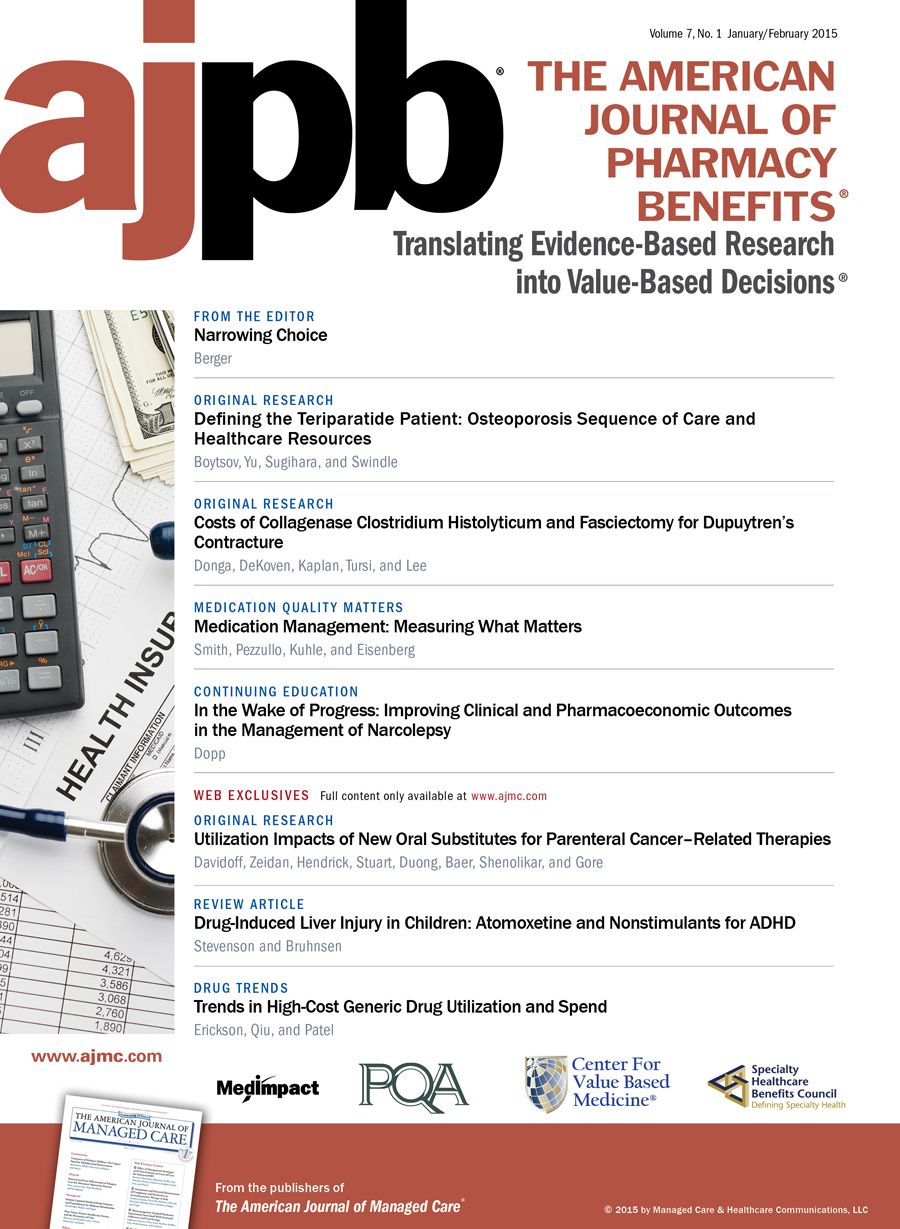Publication
Article
AJPB® Translating Evidence-Based Research Into Value-Based Decisions®
Meaningful Patient Engagement: Can We Agree on a Framework?
Author(s):
While there is increased awareness and activity in the area of patient engagement, efforts to advance the concept are fragmented and disjointed.
One of the strengths of the American Journal of Pharmacy Benefits is that authors of research articles routinely seek out the patient perspective, such as how people rate the care they receive and their views on available treatment options.
Growing pressure to improve the quality of healthcare and reduce costs has led the health community to seek solutions that address these seemingly competing demands. One well-accepted approach to achieving these goals is to promote better alignment of treatments with individual patient needs and goals,1 and early research has shown that patients who engage in their own healthcare tend to have better outcomes.2 As a result, the concept of patient engagement is gaining momentum as a practical, ethical, and patient-focused way to improve healthcare outcomes.
As important as understanding the patient perspective on their care is the soliciting of patient input in the earlier stages of research during the creation and approval of new drugs and treatments—this is especially true for patients with chronic conditions.
Patient involvement in product development has traditionally been one in which people with chronic conditions are passively, transiently, and sporadically engaged. Patients typically join the process during clinical trial recruitment, which takes place after critical decisions on research questions, study design, and end point selection have already been finalized.3
We can do better. There are countless opportunities in which working with patients is both possible and valuable. Stakeholders in both the private and public sectors have been increasingly experimenting with different engagement strategies to better understand the distinct perspectives of patients with chronic conditions, and how to incorporate these data into the decision-making process for new treatments.
In fact, drug developers and researchers have spearheaded numerous efforts to leverage patient expertise.4,5 The intent is to ensure not only that new products being made available to patients actually meet their needs, but also that clinical trials—conducted to inform regulatory approval and eventual clinical use—are capturing information that is highly relevant and specific to the end users themselves.
The FDA has also made great strides toward creating a framework for collecting and incorporating patient perspectives into its regulatory decision making, as noted in this column last year.6 The major focus has been on better assessment of the benefit-risk balance of treatment options from the perspective of the people who will be impacted the most. Efforts to incorporate the patient voice in other stages of review are also under development.
Many methods to engage individuals currently exist, and patients have identified components of the engagement process that matter most to them (
Table
). While there is increased awareness and activity in the area of patient engagement, efforts to advance the concept are fragmented and disjointed.7 What is needed is a cohesive framework for patient engagement, a vision for the future, and a collaborative effort to navigate forward. In a united effort to coalesce the health community, the National Health Council and Genetic Alliance convened a meeting in March of multiple stakeholders, including policy makers, pharmaceutical companies, health insurance companies, and others, to explore areas of consensus when addressing patient engagement.8
- How do we define meaningful patient engagement? Before any standards for patient engagement can be developed, stakeholders must first arrive at a unified vision for what meaningful patient engagement looks like along the researchto-product-approval continuum.
- What methods of engaging patients could yield success? Stakeholders would benefit from developing consensus-driven resources, assessing innovative strategies, and examining who to engage, when to engage, and how to engage.
- What are the barriers to meaningful patient engagement? In order to truly move the needle in patient engagement, stakeholders must be able to identify, explore, and systematically address the highest priority and most impeding barriers.
- What are the most effective ways to address these barriers? Only when barriers such as cost, organizational culture, legal risks, and regulatory hurdles are overcome can optimal patient engagement exist.
As the diverse healthcare community increasingly seeks to integrate the patient voice into the process of developing new therapies that address what is most important to individuals with chronic conditions, there is a growing need for a more structured, consistent, and meaningful approach to engaging patients. The meeting in March was a first step in the development of a consensus-driven framework for meaningful patient engagement that will help to guide stakeholders in developing strategies across the drug development, approval, and utilization continuum.







